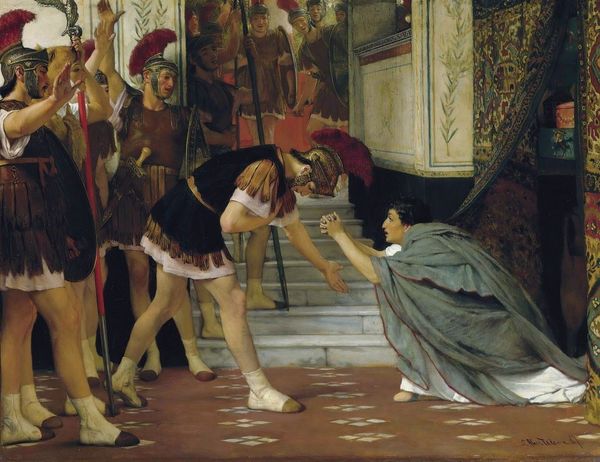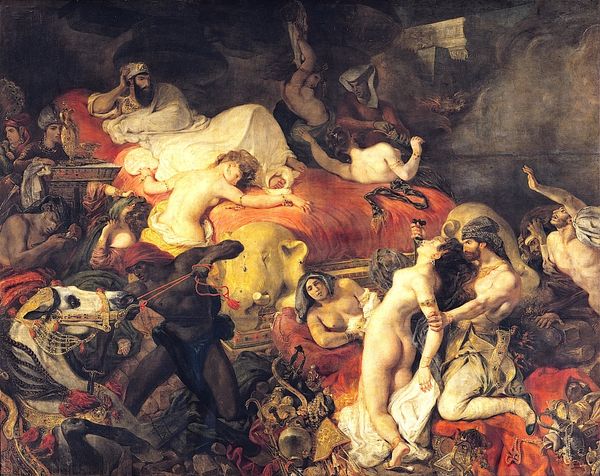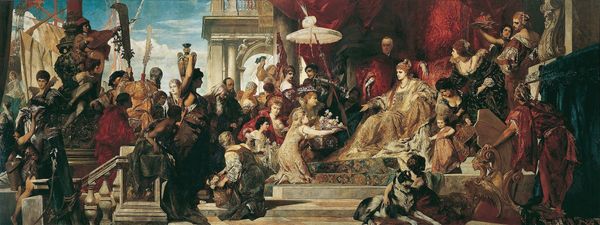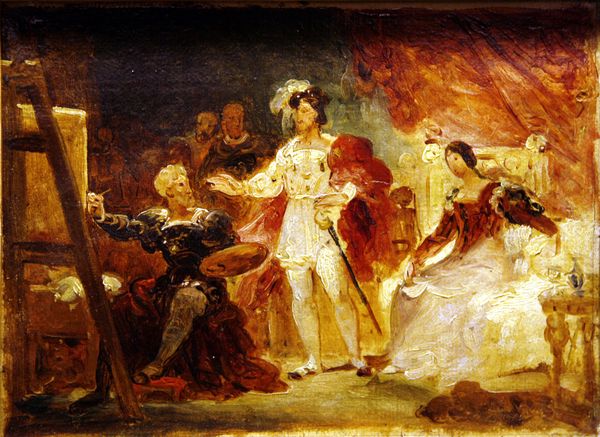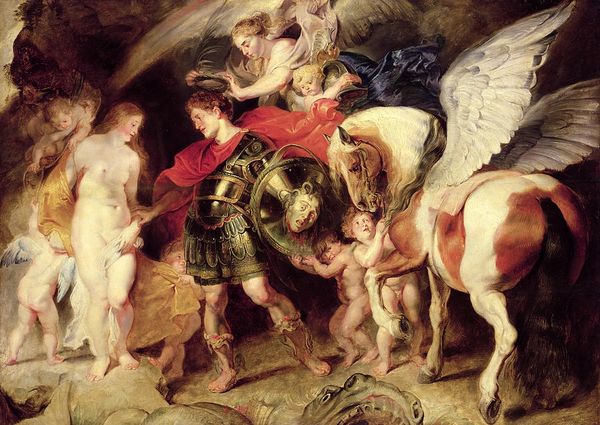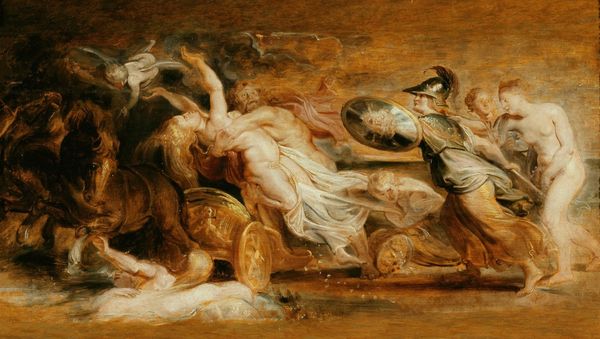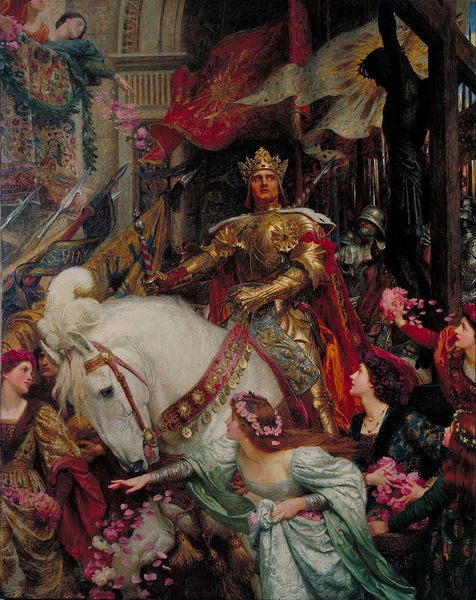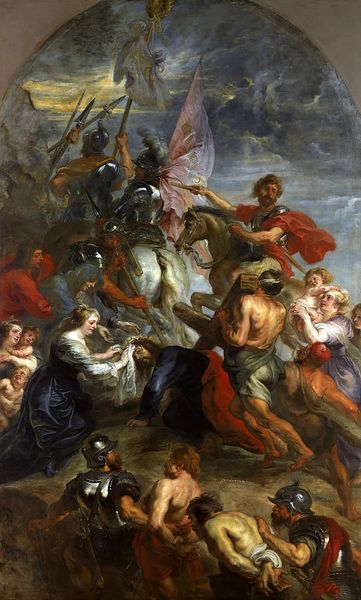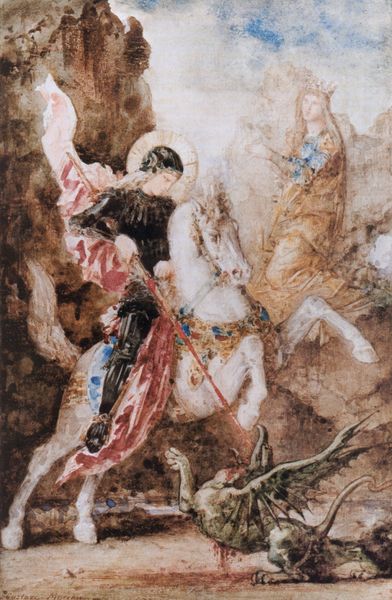
Dimensions: support: 889 x 1689 mm
Copyright: CC-BY-NC-ND 4.0 DEED, Photo: Tate
Curator: Landseer’s 'The Defeat of Comus,' housed here at the Tate, plunges us into a swirling scene of revelry and resistance. Editor: Wow, what a vibrant fever dream! It’s like a bacchanal interrupted by a knight errant. I love how it straddles that line between beautiful and grotesque. Curator: Precisely! Landseer draws from Milton's 'Comus,' where the virtue of the Lady is threatened. The figures are symbolic carriers of morality, like Comus himself, the god of excess. Editor: So the Lady, with her ethereal gown, represents chastity under siege? And Comus, draped in gold, embodies temptation? It’s a delicious visual power struggle. I see the chalice spilled at her feet. Curator: Absolutely. The imagery suggests a conflict not merely of bodies, but of ideals. The composition, framed by those arching figures, enhances the sense of a symbolic tableau. Editor: It reminds me that these older myths still pulsate beneath our everyday lives, shaping desires and fears, if you are open to seeing them. What do you think? Curator: Indeed, by returning to the classical allegories, Landseer shows that the battle between virtue and vice is ongoing. Editor: This painting is not merely an illustration, it's a reminder of the ongoing struggle between our higher and lower selves. Cheers to that!
Comments
tate 7 months ago
⋮
http://www.tate.org.uk/art/artworks/landseer-the-defeat-of-comus-n00605
Join the conversation
Join millions of artists and users on Artera today and experience the ultimate creative platform.
tate 7 months ago
⋮
In 1843 Queen Victoria's husband, Prince Albert, commissioned a number of painters to decorate a small garden pavilion in the grounds of Buckingham Palace. The artists were to select scenes from the masque Comus by the seventeenth-century poet John Milton, and subjects from the work of the Romantic novelist and poet Walter Scott. Like Boydell's Shakespeare Gallery (see Lear and Cordelia displayed above) it was hoped that the project would help encourage British history painting. This is Edwin Landseer's preliminary sketch, showing the rout of Comus and his company of revellers. The pavilion was pulled down in 1928. Gallery label, September 2004

